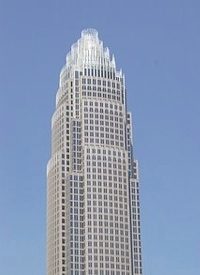
When Bank of America announced that it was moving its derivatives-laden portfolio at its subsidiary Merrill Lynch over to its bank holding company, it said it was merely responding to pressure from some of its partners to take advantage of the holding company’s higher credit rating. It would also reduce the need for the bank to post an additional $3.3 billion in collateral because of the recent downgrade it suffered at the hands of Moody’s last month.
But the real reason, according to Bloomberg, is that the FDIC insures the bank but not Merrill Lynch, and in the event of a failure in its derivatives holdings, the FDIC, courtesy of the U.S. taxpayer, would pay off depositors who suffered losses.
Bloomberg notes, “Derivatives are financial instruments used to hedge risks or for speculation. They’re derived from stocks, bonds, loans, currencies and commodities, or linked to specific events such as changes in the weather or interest rates.” But since the early 1990s banks have more and more moved to the “speculation” part of the equation, generating an estimated $35 billion in trading profits annually.
Part of the derivatives market is traded openly on exchanges such as the Chicago Board Options Exchange (CBOE) and include options, futures and indices which expire in each quadruple witching hour in the markets. The size of this market is estimated to be $600 trillion. The other part, however, is hidden from view, called the over-the-counter (OTC) derivatives market. As Webster Tarpley explains:
These often take the form of contracts which are kept secret by the counterparties, and which are often not included on the balance sheets of banks and other institutions that enter into these contracts. This type of derivative is currently not reportable to any regulatory agency.
It is enormously profitable for the banks. As noted by the New York Times, “Perhaps no business in finance is as profitable today as derivatives. Not making loans. Not offering credit cards. Not advising on mergers and acquisitions. Not managing money for the wealthy.” In fact,
The precise amount that banks make trading derivatives isn’t known, but there is anecdotal evidence of their profitability. Former bank traders who spoke on condition of anonymity because of confidentiality agreements with their former employers said their banks typically earned $25,000 for providing $25 million of insurance against the risk that a corporation might default on its debt via the swaps market. These traders turn over millions of dollars in these trades every day, and credit default swaps are just one of many kinds of derivatives.
Put together, the above-ground derivatives market plus the underground, off-balance-sheet derivatives market total an astounding $1.4 quadrillion (that’s $1400 trillion), according to Graham Summers at Seeking Alpha.
To put that number into some kind of perspective, Summers says that the derivatives market is:
• 40 times the world’s total stock market
• 10 times the value of every stock and every bond on the planet
• 23 times the world’s gross domestic product
At present Bank of America holds derivatives worth approximately $75 trillion, while JPMorgan Chase (already a bank covered by the FDIC) holds another $79 trillion. By Gary North’s estimate, the banks considered too big to fail hold at least $250 trillion in derivatives.
When Brooksley Born was appointed head of the Commodity Futures Trading Commission (CFTC) by President Clinton in 1996, she soon discovered the true nature and the growing size of the derivatives market. And it frightened her, so much so that it kept her awake at night. She admitted that she woke up repeatedly at night “in a cold sweat. I was really terribly worried.”
Four years before taking over at the CFTC, the agency exempted most of the underground or “dark market” derivatives trading business from regulation. By the late 1990s that market had grown in size to $25 trillion and losses in derivatives trading that triggered the bankruptcy of Orange County, California, only heightened Born’s concerns. Despite pleas for more transparency, Alan Greenspan (then head of the Federal Reserve), Larry Summers (then deputy Secretary of the Treasury), and Robert Rubin (then Secretary of the Treasury) all strongly opposed it, saying that any prying into it might cause it to implode with worldwide consequences. Born didn’t relish being on the right side of the issue when, in September 1998, Long-Term Capital Management — a hedge fund that had used derivatives to leverage $5 billion into more than $1 trillion — nearly collapsed and had to be bailed out by its banking clients and the Federal Reserve.
When she left the agency in 1999 she said prophetically, “I think we will have continuing danger from these markets and that we will have repeats of the financial crisis — they may differ in details but there will be significant financial downturns and disasters attributed to this … over and over, until we learn from experience.”
The hard question has to be asked: If something goes wrong, terribly wrong, and the FDIC and the Fed are forced to come to the rescue once again, what will happen given the size of the potential market failure? There would really be only two options open: Let the participants in the derivatives market take their losses (“You plays the game, you takes your chances”) or print enough money to cover their losses. In the last bailout, predicted indirectly by Born, the Fed created some $20 trillion in digital money to calm the seas. In the next one, any bailout would certainly be $20 trillion multiplied by at least a factor of 10. Bank of America knows that the Fed would never let them fail. That’s why B of A continues to consider the American taxpayer its own private piggy bank for rainy days such as this one.
Photo: Bank of America Corporate Center, located in Charlotte, North Carolina



